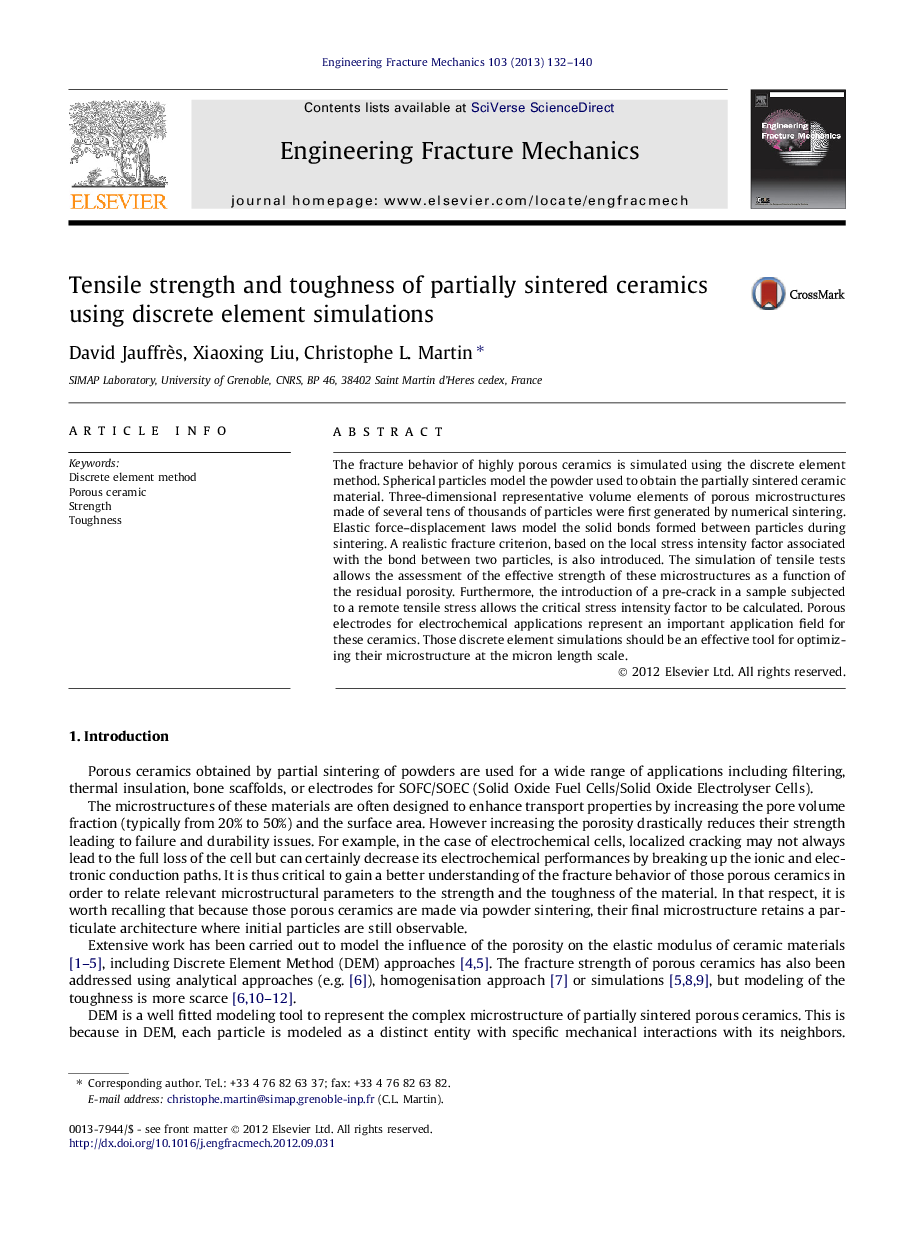| Article ID | Journal | Published Year | Pages | File Type |
|---|---|---|---|---|
| 770468 | Engineering Fracture Mechanics | 2013 | 9 Pages |
The fracture behavior of highly porous ceramics is simulated using the discrete element method. Spherical particles model the powder used to obtain the partially sintered ceramic material. Three-dimensional representative volume elements of porous microstructures made of several tens of thousands of particles were first generated by numerical sintering. Elastic force–displacement laws model the solid bonds formed between particles during sintering. A realistic fracture criterion, based on the local stress intensity factor associated with the bond between two particles, is also introduced. The simulation of tensile tests allows the assessment of the effective strength of these microstructures as a function of the residual porosity. Furthermore, the introduction of a pre-crack in a sample subjected to a remote tensile stress allows the critical stress intensity factor to be calculated. Porous electrodes for electrochemical applications represent an important application field for these ceramics. Those discrete element simulations should be an effective tool for optimizing their microstructure at the micron length scale.
► Discrete element method is used to model partially sintered ceramics. ► Appropriate contact law is used to model sintered bonds between particles. ► Realistic bond fracture criterion is introduced. ► Pre-cracked samples are used to assess the toughness. ► Numerical results are compared to published experimental data.
